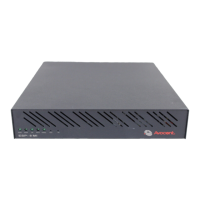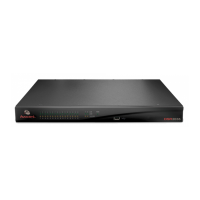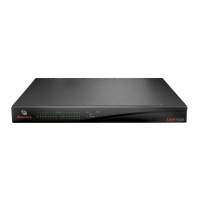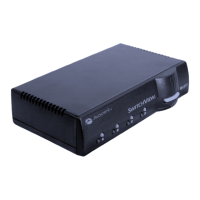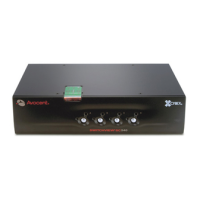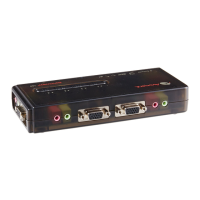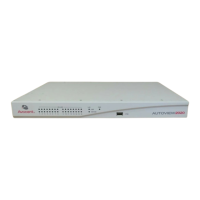54 ESP-4 MI Serial Hub Installer/User Guide
Sample buckets
Each sample is collected in a bucket that may contain up to 1024 characters, plus the corresponding
control signals. Buckets are stored in a circular buffer. You may configure the maximum number of
buckets in the buffer. If the maximum is exceeded, the oldest buckets are overwritten.
Data is saved only if there has been a change in state during the five second time-out interval, that
is, if data has been transmitted or received or a change in the control signals is detected.
(Theoretically, if there is no data traffic on the serial interface, buckets could be filled with only
control signals, and no data would be available for later analysis. This occurrence is unlikely,
but possible.)
The sampling rate is driven by data or time-outs, not the control signals. It is therefore possible that
multiple control signal transitions could occur and not be recorded. However, this prevents rapidly
filling all the buckets if there is a floating signal or if many flow control transitions occur.
When data is being sampled, it is requested with a five second time-out. If there is no data
movement and a sampling exchange returns due to a time-out, the state of the control signals is
checked and compared to the previous sample. If the control signals have changed, a sample bucket
will be filled with zero data and the new state of the control signals. So, even when there is no data
traffic on the serial interface, the control signals will be checked every five seconds.
To use the datascope function:
1. Launch the ESP-View utility.
2. Click the Datascope tab.
-or-
From the ESP-View utility menu, select Tools - Datascope.
3. In the Settings panel,
a. From the ESP Port listbox, select a port.
b. From the Size listbox, you may change the maximum number of sample buckets in the
circular buffer.
4. To start polling, click the Start button. A rotating circle will appear in the lower right corner of
the window to indicate that the datascope is running.
5. To pause polling, click the Pause button. To resume, click the Pause button again.
6. To stop polling, click the Stop button.
You will be prompted to Review, Save or Cancel the session.
• Review - The display will be refreshed with a table containing all the data collected since
this sampling was started. To view all the data, you may use the scroll bar,
Arrow keys or
the Beginning, Reverse, Forward or End buttons.
When you are finished viewing the data, you may:
Save the data by selecting File - Save from the ESP-View utility menu.
-or-
Start a new session by clicking the Start button. A message is displayed, prompting you to

